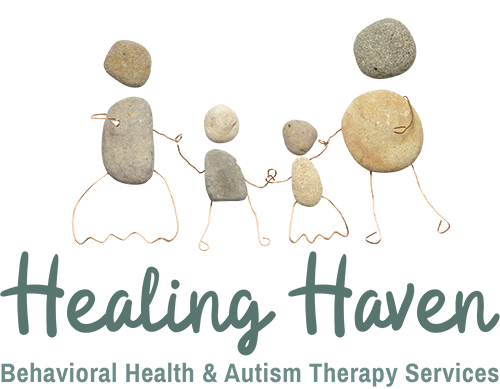
Applied Behavioral Analysis therapy (ABA) is considered the “gold standard” for autism treatment. So why are there myths of ABA therapy and online opinions that contradict this?
Though ABA is backed by scientific research, misinformation or misunderstandings still surround the practice. You may be considering ABA therapy for your child but have concerns. You might also simply want to know more about it before choosing it as a treatment option. Here we debunk common ABA myths to ease any lingering worries and to give accurate information so parents like you can make informed decisions.
1. ABA is only for children with profound impairments
ABA therapy treats individuals with autism across the spectrum, not just those who have an intellectual disability, or those without functional language. Likewise, therapy will be different depending on the person.
For example, a verbal person may work on conversing with peers while a non-verbal person may focus on basic communication through a Picture Exchange Communication System (PECS) book or an Augmentative and Alternative Communication (AAC) device. ABA providers assess the child and discuss working toward goals that are most socially significant to the child, like communication, socialization, play and daily living skills.
2. ABA doesn’t work for older kids
Though many parents begin ABA early when their children with autism are young, ABA helps individuals of all ages. We know learning doesn’t stop in young childhood. Many older kids and teens on the spectrum struggle with socialization and communication. Therefore, ABA has much to offer kids in its wide variety of approaches. Whatever the age of the individual, progress and success are achievable and are worthy of celebration.
3. ABA can create robotic responses
This is a common ABA myth. ABA is the most efficacious intervention for children on the autism spectrum when implemented properly. When careful consideration is given to ensure the skills that are taught are useful and meaningful, “robotic” responses are avoided. Children engaged in highly repetitive teaching programs with little opportunities to carry over skills to the real world, are at a higher risk of exhibiting this behavior.
Parents should look for ABA programming that targets skills and behaviors that are relevant to the child’s life. They should also provide opportunities for their child to practice the skills in a natural setting. When done properly, children receiving ABA therapy acquire skills that are functional for their everyday activities.
4. ABA uses punishment
The misunderstanding regarding punishment in ABA therapy is caused by the terminology used in everyday language versus how it is used in the field of ABA.
In ABA terms, a “punishment” is defined as anything that decreases the chances of a behavior occurring again because of an event that directly followed the behavior. In contrast, in everyday use, many people equate the term “punishment” with something angry or mean, which is never the case in our ABA therapy in our clinics.
For example, if a child throws their toy against a glass window, a caregiver may decrease the likelihood that this would happen again in the future by taking the toy away after they throw it. Taking the toy away is considered a “punishment” if it decreased the behavior in the future. ABA therapy recognizes the world is made up of natural punishment and reinforcement.
5. ABA is all the same
ABA is tailored to the child’s needs and goals. What may work for one individual might hinder another. Board Certified Behavior Analysts (BCBAs) utilize a vast array of approaches including positive reinforcement, prompting and shaping to help a child learn and thrive. Research demonstrates that ABA helps more than just one type of child. If ABA used the same approach for all, it would not hold the effectiveness it has garnered over the past 50 years.
6. ABA therapy is only used to address problematic behaviors
It is true that ABA therapy is effective for eliminating problematic or dangerous behaviors. However, it is also just great teaching. As such, it is extremely helpful to build up skills such as communication, socialization and play. ABA works to improve these various areas to collectively better the individual’s life experience.
7. ABA is a cure for autism
Autism spectrum disorder is not a curable condition. Of the many existing approaches there are to help children navigate life with autism, ABA therapy is the only scientifically backed method of treatment. ABA is not meant to take away the autistic experience, but to make the hard parts manageable with the main goal of improving quality of life for the individual.
We hope this helped clarify some common ABA therapy myths or misconceptions you may have had. Head over to What is ABA Therapy: Your Questions Answered for more information on what ABA therapy looks like here at Healing Haven. And our ABA Therapy Programs page has details on all the various ABA therapy services we provide.
